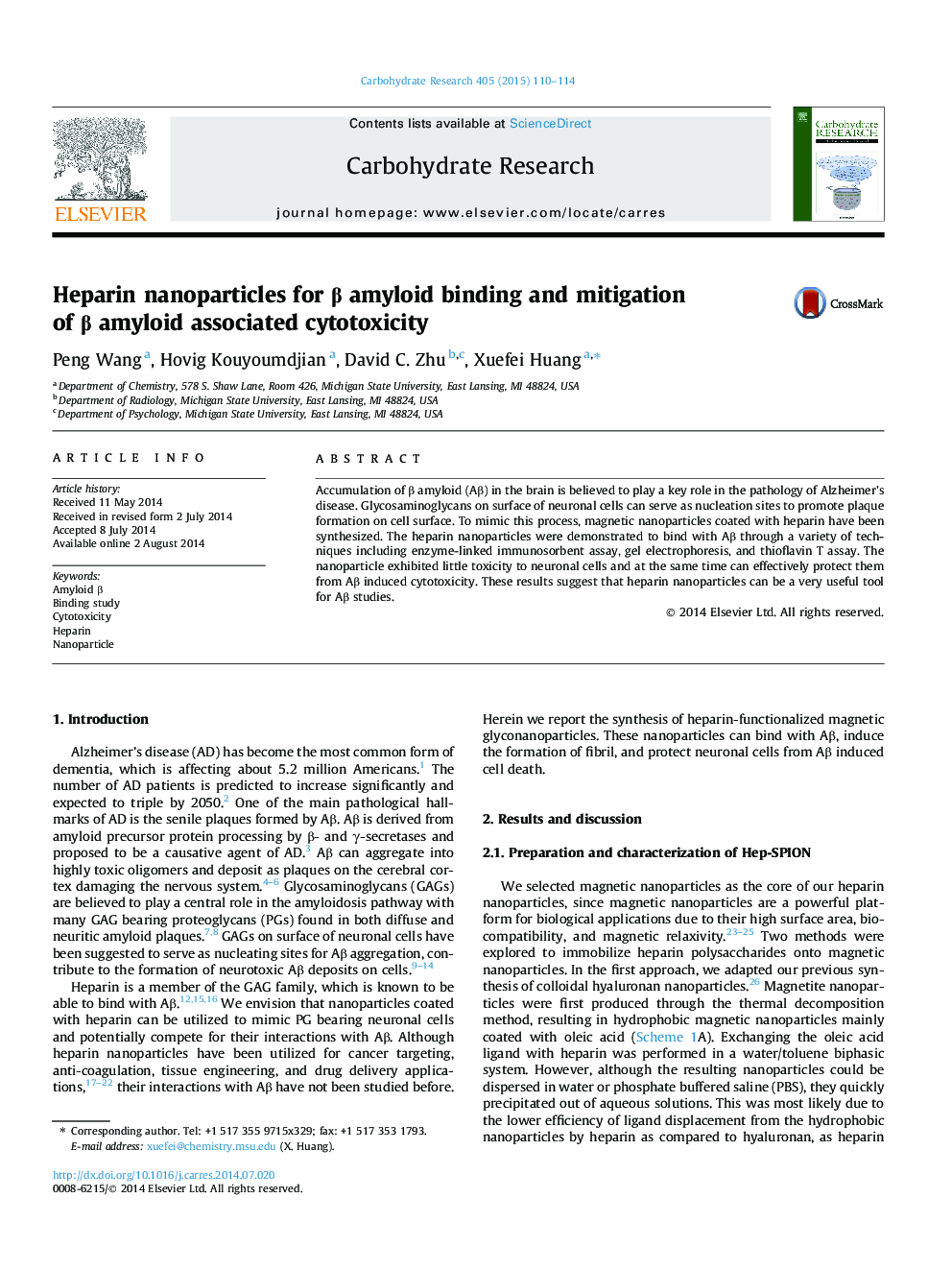| کد مقاله | کد نشریه | سال انتشار | مقاله انگلیسی | نسخه تمام متن |
|---|---|---|---|---|
| 1388417 | 1500846 | 2015 | 5 صفحه PDF | دانلود رایگان |

• Heparin-coated superparamagnetic iron oxide nanoparticles have been synthesized.
• Heparin nanoparticles can bind with β amyloid and accelerate the formation of fibril.
• Heparin nanoparticles can protect neuronal cells from Aβ induced cytotoxicity.
Accumulation of β amyloid (Aβ) in the brain is believed to play a key role in the pathology of Alzheimer’s disease. Glycosaminoglycans on surface of neuronal cells can serve as nucleation sites to promote plaque formation on cell surface. To mimic this process, magnetic nanoparticles coated with heparin have been synthesized. The heparin nanoparticles were demonstrated to bind with Aβ through a variety of techniques including enzyme-linked immunosorbent assay, gel electrophoresis, and thioflavin T assay. The nanoparticle exhibited little toxicity to neuronal cells and at the same time can effectively protect them from Aβ induced cytotoxicity. These results suggest that heparin nanoparticles can be a very useful tool for Aβ studies.
Figure optionsDownload as PowerPoint slide
Journal: Carbohydrate Research - Volume 405, 20 March 2015, Pages 110–114